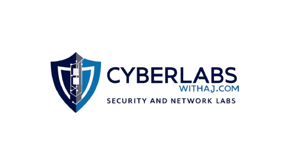Cybersecurity Career Path: Where to Start and What to Learn First in 2025
Want to start a career in cybersecurity in 2025? Learn the exact path, skills, certifications, and tools beginners need to become successful security professionals. cybersecurity-career-path-2025
BOLGS


🔐 Cybersecurity Career Path: Where to Start and What to Learn First in 2025
With cyberattacks rising every year, cybersecurity is one of the most in-demand careers in the tech world. From data breaches to ransomware, companies are actively looking for skilled professionals who can protect their digital assets.
But where should you start if you're new to the field?
This guide is your step-by-step cybersecurity career roadmap for 2025, designed for students, IT beginners, and career switchers.
Step 1: Understand the Cybersecurity Landscape
Before you jump into tools and courses, get a basic understanding of what cybersecurity really covers:
🔐 Blue Team (Defensive): Protect systems, monitor threats, respond to incidents
🛡️ Red Team (Offensive): Ethical hacking, penetration testing, social engineering
⚙️ GRC/Compliance: Governance, Risk Management, and Compliance
🌐 Cloud Security, Network Security, Application Security — growing subfields
💡 Start by reading about roles like SOC Analyst, Penetration Tester, or Cybersecurity Engineer.
Step 2: Learn Core Concepts (Without Overwhelm)
Here’s what every beginner must learn:
TopicWhy It MattersNetworking BasicsUnderstand IPs, ports, DNS, protocols like TCP/UDPOperating SystemsKnow your way around Windows, Linux (Kali, Ubuntu)Security PrinciplesCIA Triad, firewalls, antivirus, authenticationThreat TypesMalware, phishing, ransomware, DoS attacksCyber HygieneSecure passwords, backups, updates
Use platforms like Cybrary, TryHackMe, and YouTube for free learning.
Step 3: Get Hands-On with Free Tools
Start using beginner-friendly cybersecurity tools like:
✅ Wireshark – Network traffic analysis
✅ Nmap – Port scanning
✅ Burp Suite – Web app security
✅ OpenVAS – Vulnerability scanning
✅ TryHackMe – Guided labs and learning paths
🎯 Practice makes the difference between theory and true skill.
Step 4: Choose a Certification Path
Certifications help validate your skills. Here's a beginner-friendly order:
Level Certifications Entry CompTIA Security+, Google Cybersecurity Certificate MidCEH (Certified Ethical Hacker), Cisco CCNA Security Advanced CISSP, OSCP, CISM
💡 Start with Security+ or Try Hack Me learning paths if you're new.
Step 5: Build a Lab & Portfolio
Start a home lab using:
VirtualBox or VMware
Kali Linux, Metasploitable, pfSense, or Windows VMs
Document everything you do → turn into a blog, GitHub repo, or LinkedIn post
This helps you during job interviews and shows practical skills to recruiters.
Step 6: Apply for Entry-Level Roles
Look for roles like:
SOC Analyst (Security Operations Center)
IT Support with Security Focus
Junior Penetration Tester
Cybersecurity Internships
Network Support + Security Hybrid Roles
🧠 Tip: Don’t wait to be “perfect.” Learn and apply simultaneously.
Conclusion: The Path is Clear — Just Start
Cybersecurity is vast, but if you start right, it becomes manageable — and exciting.
Learn the fundamentals, explore your interest area, practice in labs, and earn certifications.
In 2025, the demand is growing — and with the right learning mindset, you can grow with it.
